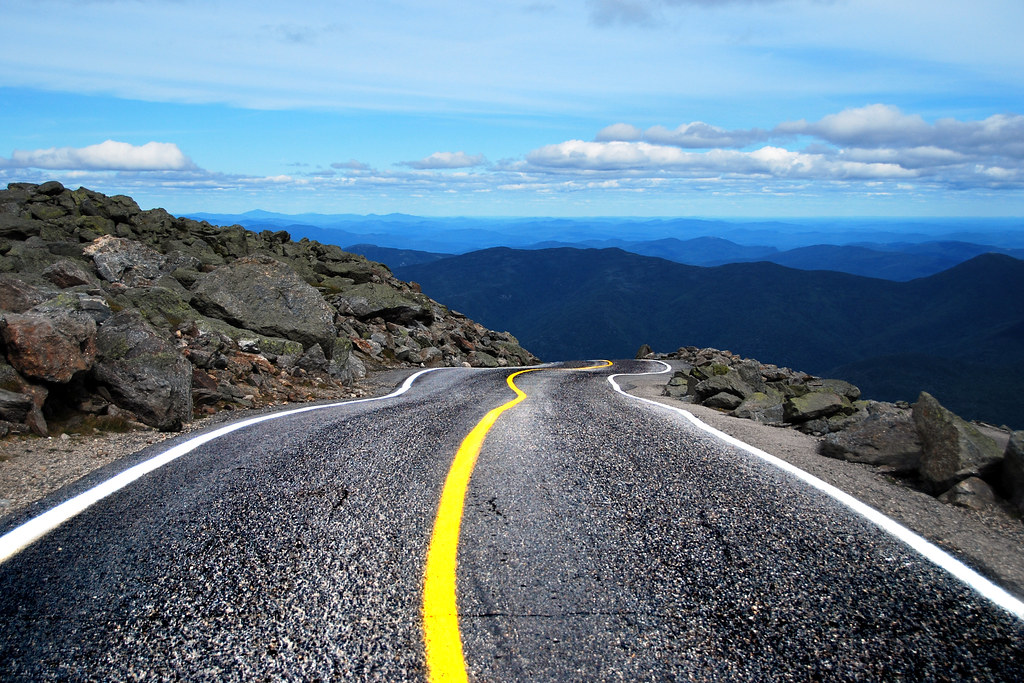Preparedness
Tips for Road Safety

Traveling on the open road can be an incredible adventure, but it’s important to prioritize safety along the way. As a seasoned explorer and advocate of preparedness, I believe that being well-prepared and informed is essential for any journey. Whether you’re a seasoned traveler or hitting the road for the first time, these safety tips will help ensure a smooth and secure journey.
1. Regular Vehicle Maintenance:
Before embarking on any road trip, it’s crucial to have your vehicle thoroughly checked. This includes inspecting the tires, brakes, fluids, lights, and wipers. Keep up with routine maintenance and address any issues promptly to avoid unexpected breakdowns on the road.
2. Plan Your Route:
A well-planned route is not only essential for saving time but also for your safety. Identify major landmarks, fuel stations, rest areas, and emergency services along your intended path. Additionally, have a backup route in mind in case of detours or road closures.
3. Familiarize Yourself with Road Laws:
Each state or country may have different traffic laws and regulations. Make sure to familiarize yourself with the rules of the road before crossing any borders. Adhere to speed limits, wear your seatbelt, and avoid distracted driving at all costs.
4. Share Your Itinerary:
Inform a trusted friend or family member about your travel plans, including your route, expected arrival times, and contact information. Regularly update them on your progress and if any changes occur. This way, someone will always know where you are and can act promptly in case of an emergency.
5. Emergency Kit Essentials:
Prepare an emergency kit that includes a first-aid kit, flashlight, spare tire, tire jack, jumper cables, and a basic toolkit. Additionally, pack some non-perishable food, water, and a blanket in case you become stranded for an extended period.
6. Stay Alert and Avoid Fatigue:
Long road trips can be exhausting, leading to driver fatigue. Take regular breaks to stretch, rest, and recharge. If you’re feeling drowsy, stop in a safe location and take a power nap. Remember, your safety and the safety of others on the road depend on your alertness.
7. Secure Valuables and Lock Doors:
When stopping to rest or explore, always lock your vehicle’s doors and ensure that all valuables are out of sight. Thieves are opportunistic, and an unattended vehicle can be an easy target. Don’t make yourself vulnerable to theft or break-ins.
8. Be Weather-Wise:
Weather conditions can change rapidly during a road trip. Stay updated with weather forecasts and be prepared for adverse conditions. If you encounter heavy rain, snow, or fog, reduce your speed, increase following distance, and use your headlights accordingly.
9. Avoid Nighttime Travel:
While road trips often involve longer drives, it’s best to avoid extensive nighttime travel, especially in unfamiliar areas. Reduced visibility and fatigue increase the risk of accidents. Whenever possible, plan your journey to allow ample time for rest before continuing.
10. Be Mindful of Wildlife:
When driving in rural or forested areas, be aware of potential wildlife encounters. Animals crossing the road can be unexpected and dangerous. Pay attention to any wildlife warning signs and reduce your speed in these areas to improve reaction time.
Remember, safety should always be your highest priority when traveling on the road. By taking precautions, being well-prepared, and staying alert, you’ll ensure a more enjoyable and secure journey. So buckle up, keep your eyes on the road, and embrace the adventure that awaits. Safe travels, fellow explorers!
Disclaimer: The article provides general safety tips and information. Always keep in mind that local laws, regulations, and circumstances may vary, so adapt these suggestions accordingly.

Preparedness
5 Things in Your Home That Can Help You Create a Safe Escape Plan

Not every dangerous moment involves a direct confrontation. Sometimes the real threat is confusion, panic, or not knowing what to grab when you need to react fast. Your home already has simple items that can help you stay oriented, stay calm, and get out safely if something goes wrong — whether it’s a break-in, a fire, or any unexpected emergency.
Here are five everyday things that can quietly strengthen your safety plan without feeling like “preparedness gear.”
1. A Pair of Shoes You Can Slip On Fast
This sounds almost too simple, but it’s one of the most overlooked safety tools in any house.
If you need to leave in a hurry — even just to get outside and call for help — you don’t want to waste time with laces or walk barefoot over broken glass, cold pavement, or debris. Keep a sturdy slip-on pair by your bed. It’s a small habit that can make a huge difference.
2. A Charged Old Phone
Even a disconnected phone can still call 911.
If you have an old smartphone in a drawer, charge it and leave it in your bedroom or a hidden spot. During an emergency, your main phone might be out of reach, dead, or taken. Having a backup gives you a second chance to call for help.
3. A Mini Flashlight on Your Nightstand
Power outages often happen at the worst moments. A small flashlight helps you see where you’re stepping, find your keys, or check on a noise without stumbling around in the dark. It also helps you avoid tripping hazards if you need to move quickly. Choose a compact LED one and keep it in the same spot every night.
4. A Loud Whistle
If you can’t shout, or your voice doesn’t carry far, a whistle can be your lifeline.
It cuts through walls, hallways, and even outdoor distance better than yelling. Whether you’re trying to alert a neighbor, scare off an intruder, or signal for help during a medical emergency, a whistle is one of the most underrated tools for personal safety.
5. A Written “Quick Escape Plan”
You don’t need blueprints — just a simple index card taped inside a drawer or next to your nightstand.
Write down:
• Your fastest exit routes
• Where your keys always stay
• Where your phone and flashlight stay
• A reminder to put on shoes
• Who to call first
In a panic, people forget steps. A small card keeps your mind focused and your actions clear.
Final Thought
Self-protection starts long before danger shows up. It’s not about preparing for a fight — it’s about preparing to move, think, and react in a way that keeps you safe.
Preparedness
5 Everyday Items in Your Home That Can Help You Protect Yourself

Most people don’t keep traditional self-defense tools around the house, but that doesn’t mean you’re helpless in an emergency. The truth is, you already own simple items that can give you precious seconds to get away, call 911, or draw attention. The key is knowing what works, what’s legal, and how to use these items only to defend yourself when you have no other choice.
Here are five practical household items that can help you stay safe during a threatening situation:
1. A Heavy-Duty Flashlight
A solid, metal flashlight is one of the best non-lethal tools you can keep within reach.
It serves two purposes:
• The bright beam can disorient someone long enough for you to escape.
• The sturdy body gives you something to hold if you need to keep distance between yourself and a threat.
Keep one by your bed and another near your front door.
2. A Loud Personal Alarm or Air Horn
Sometimes the strongest defense is noise. A personal alarm or small air horn can draw attention fast and frighten off an intruder. These devices are inexpensive, easy to use, and require no physical strength. They also alert neighbors that something is wrong, which can shorten response time dramatically.
3. A Strong Walking Cane
For older adults especially, a cane can be surprisingly effective for self-defense if absolutely needed. Its length helps you create distance, and its solid structure gives you a way to push someone back without having to get close. Even if you don’t use a cane daily, keeping one near your bedroom can be smart.
4. A Fire Extinguisher
Beyond its intended use, a fire extinguisher can help you defend yourself in two ways:
• The blast of spray can temporarily block vision and breathing, allowing you to escape.
• Its weight gives you something sturdy to hold while you retreat.
Plus, it’s already a safety essential for your home.
5. A Kitchen Pan or Lid
If you’re caught in the kitchen, a heavy pan or even a metal pot lid can create an effective barrier. A lid works like a small shield, helping you protect your face and upper body as you move away. A pan gives you something solid to hold between you and a threat.
A Final Note on Safety
Self-defense is always about getting away safely, not engaging in a fight. Your first options should always be:
• Avoid the situation
• Lock or barricade a door
• Call for help
• Get to safety
Use objects only as a last resort and only to give yourself time to escape.
Preparedness
5 Things You Should Always Carry During a Winter Storm

When a winter storm rolls in, life can shift fast. Roads freeze, power lines drop, and long errands suddenly become real risks. The good news is that a little preparation goes a long way, especially if you keep a few essential items within reach. These aren’t expensive or complicated. They’re simple, practical tools that can make all the difference when temperatures drop and help arrives slowly.
Below are five things worth carrying with you any time severe winter weather is in the forecast. Think of them as your personal insurance plan — small items that bring peace of mind in uncertain conditions.
1. A Fully Charged Portable Power Bank
If you’re stranded or delayed, your phone becomes your lifeline. It lets you call for help, follow weather alerts, and use GPS if you need to find your way. In cold weather, phone batteries drain much faster, so a reliable power bank is a must. Choose one that can charge your phone at least twice. Keep it in an inside pocket so cold temperatures don’t sap its power.
2. An Emergency Blanket
These lightweight, reflective blankets take up almost no space, but they retain an incredible amount of body heat. If your car breaks down or you get stuck outdoors, an emergency blanket helps you stay warm enough until help arrives. For older adults especially, preventing a rapid drop in body temperature is critical. Toss one in your glove box or day bag — you won’t notice it until you really need it.
3. High-Energy Snacks
In extreme cold, your body burns calories faster to stay warm. Carrying a small stash of calorie-dense snacks gives you steady energy and helps maintain body temperature. Look for items that won’t freeze rock-solid, such as nut butters, protein bars, granola, or trail mix. If you take medication that requires food, this becomes even more important.
4. A Compact LED Flashlight
Winter storms often come with poor visibility. Whether you’re navigating an icy path, checking under the hood, or signaling for help, a bright flashlight is worth its weight in gold. Choose an LED model with long battery life, and avoid relying solely on your phone’s flashlight. You may need that battery for communication.
5. A Small First-Aid Pouch
Accidents are more common when surfaces are slick. A small kit with bandages, antiseptic wipes, medical tape, hand warmers, and any personal medications can stabilize minor injuries until you can get proper care. Add a pair of disposable gloves to protect your hands in freezing weather.
Preparing for winter doesn’t mean living in fear. It simply means respecting the season and giving yourself the tools to stay safe, warm, and steady. With these five essentials on hand, you’ll be better equipped to handle whatever a winter storm throws your way — and you’ll travel with much more confidence as the temperatures fall.
-

 Tactical2 years ago
Tactical2 years ago70-Year-Old Fends Off Intruder with Lead-Powered Message
-

 Tactical2 years ago
Tactical2 years agoVape Shop Employee Confronts Armed Crooks, Sends Them Running
-

 Preparedness1 year ago
Preparedness1 year agoEx-Ballerina’s Guilty Verdict Sends Tremors Through Gun-Owner Community
-

 Off The Grid4 weeks ago
Off The Grid4 weeks ago10 Foods That Could Save Your Life When Grocery Shelves Are Empty
-

 Preparedness1 year ago
Preparedness1 year agoGood Samaritan Saves Trooper in Harrowing Interstate Confrontation
-

 Tactical2 years ago
Tactical2 years agoMidnight SUV Theft Interrupted by Armed Homeowner’s Retaliation
-

 Preparedness5 months ago
Preparedness5 months agoHow Much Gasoline Should You Store for Emergencies?
-

 Nature and Wildlife3 weeks ago
Nature and Wildlife3 weeks ago10 Survival Skills You Should Learn Before You Need Them
Tim
November 7, 2023 at 3:00 pm
avoid, as much as possible, you society becoming hazardous in the first place. Being a citizen comes with responsibility. Keep the insane at a great distance, usually in a safe space (institution or 6′ underground) for the betterment of all involved.